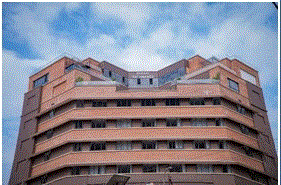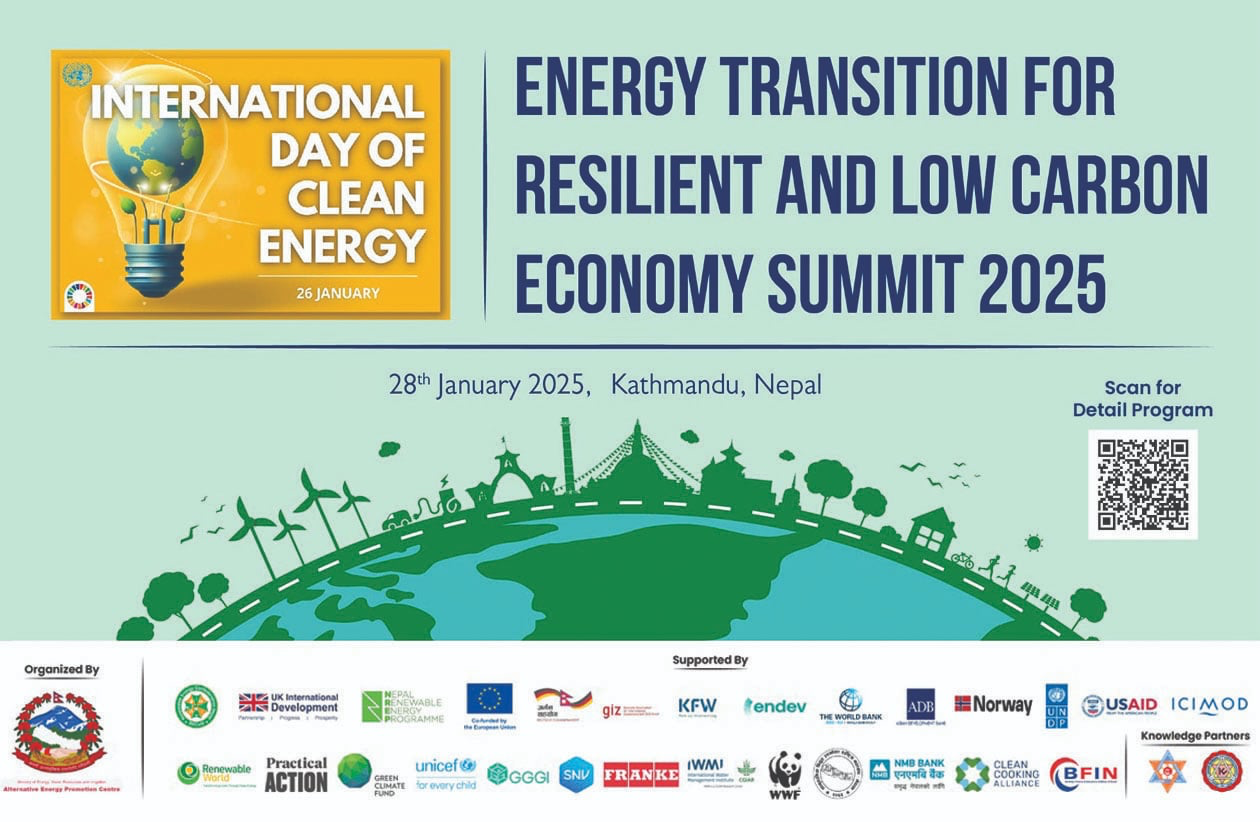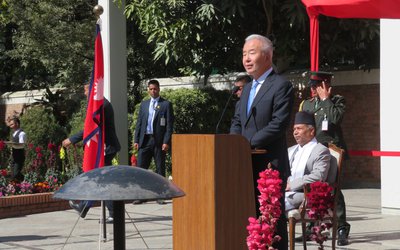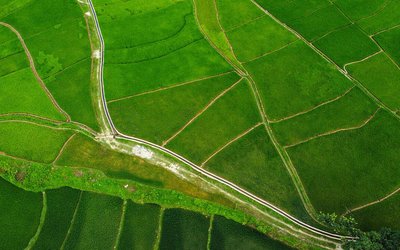The essence of globally accepted and widely used predictive tool - the environmental impact assessment (EIA) - to make the socio-economic development projects environment friendly and sustainable has been mis-understood and sufficiently diluted in the recent years in Nepal. Countries and multilateral funding agencies are effectively applying the environmental assessment (EA) - either EIA or Initial Environmental Examination (IEE) - to know in advance the beneficial and adverse impacts along with the corresponding benefits enhancement and adverse impacts mitigation measures for the prescribed projects. The strategic environmental assessment (SEA) is conducted to assess environmental impacts of a policy or a plan or a programme (not of the project).
Nepal started assessing environmental impacts of the environmentally sensitive large development projects since late 1980s and advanced the use of this tool through the EIA Guidelines, and separate EIA Guidelines for forestry and industry sectors since 1993 and 1995 respectively.
Nepal enacted Environment Protection Act (EPA, 1996) and Environment Protection Rules (EPR, 1997) that contain several provisions to conduct IEE and/or EIA for the prescribed projects and to provide environmental clearance for their implementation. From the last five years, environmental clearance has been issued as per the provisions of the EPA (2019) and its Rules (2020) which repealed the 1996 EPA and 1997 EPR. The 2019 EPA introduced a term - environmental study-that includes brief environmental study (BES), IEE and EIA. It also provisioned to conduct strategic environmental analysis (SEA) to assess environmental impacts of a 'policy, programme or project'. Hence, BES or IEE or EIA or SEA is legally required for a "project" as per the new environmental law. This contradicts with the global and previous national practices.

Non-professional intervention affected over two decades of smooth practice in legally using the EA tool. This is considered a "departure" from its principle, process and practice. Few fundamental technical errors on EA provisions in 2019 EPA and 2020 EPR further derailed the process. Although the parliament enacted the EPA and the Council of Ministers approved its Rules, top level politicians and decision-makers considered EIA as an 'anti-development tool' after three decades of its continuous and extensive use. Several people blame EA tool for obstructing the development process to hide inability for quality improvement of the EA report, and effective implementation of environmental measures, monitoring and auditing requirements as contained in the legally approved EA reports. Early approval of under quality EIA reports such as of Nijgadh international airport is also due to the 'heavy influence of the politicians'. Sporadic review informs of further erosion of the quality of the EIA reports.
Being engaged in internalizing and institutionalizing the EIA process in Nepal from mid-1980s to 2008, and in developing human resources for the proper application of this tool, I do occasionally browse the EIA reports made public by the Ministry of Forests and Environment (MoFE) and share my thoughts. This note is also the outcome of such a review.
MoFE made the EIA report of the Hotel Barahi Pvt. Ltd. public on BS 2081/08/14 (29 November 2024). This hotel was constructed in KMC-27, Kesharmahal (south to the Kesharmahal gate, across the road) with 98 beds in 67 rooms after approval of its IEE report. The project planned to restructure internally on its second floor and partially on the third floor and increase the capacity to 166 beds in 101 rooms and operate the hotel. Technically speaking, why is EIA required for such an internal adjustment to make an additional 34 rooms and 68 beds in an already built nine-storey building with existing ground floor and two basements?
Two legal provisions were used for conducting the EIA study for this hotel. They are: (i) construction, establishment and operation of a hotel or resort with over 100 beds; and (ii) construction and operation of a building that uses more than 20,000 liter groundwater daily as contained in Schedule 3 of the EPR, 2020.Regarding the first criteria, it is simply an internal rearrangement, and for the second criteria, it has planned to extract 29,500 liters of underground water, out of estimated needs of 34,500 ltr per day.
Environmental impacts depend upon the nature of project activities, location and value of location-specific resources, sensitivity of the impact receivers and socio-economic and cultural values of direct and immediate impact areas. EIA is not a panacea. It simply provides project activity-based impacts on what will and might happen by constructing and implementing a project and how are beneficial impacts can be augmented, and adverse impacts mitigated? Browsing the report further has encouraged sharing highlights and they are partially summarized below:
1 MoFE approved its ToR on BS 2081/04/28 and issued approval letter after three days. The seven-member study team conducted field visit from BS 2081/05/10 to 13. A public hearing was organized on BS 2081/05/13. The proponent collected the recommendation letter from Ward # 27 and Kathmandu Metropolitan City (KMC) after 7 days of the publication of a notice on BS 2081/05/16. The proponent has followed the required legal process, but data collection, public hearing and collection of recommendation letters were completed within three weeks. It normally does not happen on other projects. Public hearing is conducted to share the draft report, and recommendation letter is collected after sharing the final EIA report. These legal provisions were introduced in mid-1990s to inform the project affected families (PAFs) and stakeholders on potential environmental impacts through public hearing and get their inputs, and recommendation letter to ensure that concerns and suggestions received during such a hearing are incorporated in the final report to be submitted for approval. Local government offers such a letter to the proponent on behalf of PAFs and stakeholders.
2 The report mentions direct impact area (50 m distance from hotel boundary), ward # 27 as the indirect impact area and KMC as whole impact area. EIA objectives are diffused. Location of the project (hotel) as mentioned in the EIA report is north from Ratnapark along Kantipath road, west from Kantipath, south from Thamel Chowk, Tridevi marga and Durbar High School, and east from old building of the US Embassy, and south gate of the Narayanhiti Royal Palace. Google search shows its location across the road, south from Kaiser Café, Kesharmahal.
3 Data on biological environment was collected through observation and by asking the local people. Interestingly, the report mentions data collection on type and condition of forests and species, plants and animals in grassland around the project area, and conditions of the wildlife and plants. In addition, river characteristics were collected through checklist and field observation. There are several irrelevant information included in the report such as land use, watershed condition, geology and soil under the existing environmental condition.
4 The information contained under alternative analysis is also irrelevant and of no use.
5 Project-related environmental impacts, and measures proposed to enhance beneficial impacts and mitigate adverse impacts are not convincing. Some of the significant impacts are related to conflict, grievance management, health and safety of workers, pressure on existing infrastructure, urban beautification, traffic jam, etc. Training has been proposed for skill development of workers. Most of the proposed measures are difficult to differentiate with hotel activities (that are integral part of hotel management) and additional measures to address hotel-induced environmental impacts.
6 The report proposed to conduct baseline monitoring prior to the construction. Some of the monitoring indicators are related to land instability, land area, effectiveness of corrective and bio-engineering measures, water pollution due to unsafe management of hazardous waste, new settlements and population growth, land use change, mining and storage areas, rehabilitation of labor camp, community awareness activities etc.
7 About NRs 27 lakh is estimated for the implementation of environmental measures (NRs 13 lakh and 25 thousand), monitoring (NRs. 6 lakh and 30 thousand) and auditing (NRs. 7 lakh and 70 thousand).
Technically speaking, the need for an EIA for this hotel (room-making on two floors of the already constructed building) can be overruled. The proponent might be simply complying with the legal provisions than benefiting from such an assessment. Several impacts and mitigation measures contained in the report resemble those of development proposals planned for implementation in the rural areas. Several measures proposed are considered irrelevant. Most of the proposed measures to enhance environmental quality are an integral part of hotel management to maintain and improve its quality services.
Over four decades of my learning on the application of EIA as a predictive, pre-project, and location-specific tool and engaged in institutionalizing EIA system and developing human resources to conduct such an assessment call for immediate rethinking on the type and threshold of prescribed projects for this level of assessment to avoid or minimize the abuse of this tool.

Batu Uprety
Former Joint-Secretary and Chief of Climate Change Management Division, Ministry of Environment (then), and former Team Leader, National Adaptation Plan (NAP) formulation process. E-mail: upretybk@gmail.com
- Over Five Decades Of Concern On Air Pollution
- Jan 16, 2025
- Baku CoP29 Outcomes And Nepal's Initiatives
- Nov 26, 2024
- Recalling the Initiatives for Baku Climate Conference
- Oct 24, 2024
- Two Decades Of Journey On Carbon Trade
- Sep 01, 2024
- Improvement Of EIA Report: Need For A Clarity
- Aug 11, 2024















